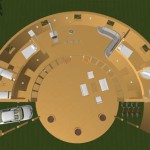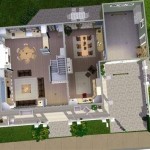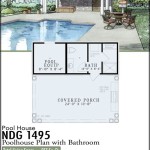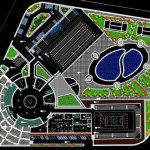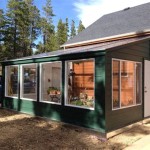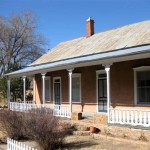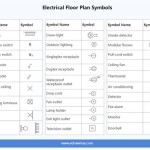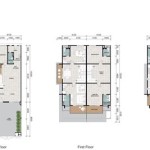Foursquare Home Plans: A Timeless Design Revisited
Foursquare house plans, also known as American Foursquare or Prairie Box, represent a distinctive architectural style popular in North America from the mid-1890s to the late 1930s. Characterized by their cubic shape and economical use of space, these homes offer a blend of practicality and classic aesthetics that continues to appeal to homeowners today.
The Foursquare design emerged as a reaction against the ornate and often impractical Victorian-era homes. Its simple, boxy form allowed for efficient construction and maximized interior space on relatively small lots, making it a popular choice for the growing middle class in urban and suburban areas. The straightforward design also made it adaptable to various budgets and stylistic preferences.
A key feature of Foursquare homes is their symmetrical facade, typically divided into four equal squares. This symmetrical division often extends to the interior layout, with rooms arranged around a central staircase. The boxy shape usually comprises two-and-a-half stories, with a pyramidal roof and a prominent dormer window adding visual interest to the otherwise unadorned exterior.
Large, covered porches are another common characteristic of Foursquare houses. These porches, often extending across the front and sometimes wrapping around the sides, provided a comfortable outdoor living space and contributed to the home's welcoming appearance. They also served a practical purpose in the days before air conditioning, offering shade and ventilation during hot summer months.
Interior layouts typically feature four large rooms on each floor, arranged around a central hall and staircase. This configuration allows for ample natural light and cross-ventilation. The first floor often includes a living room, dining room, kitchen, and perhaps a parlor or family room. Upstairs, four bedrooms and a bathroom are the standard arrangement.
The inherent flexibility of the Foursquare design allowed for variations and customizations. While many retained the classic, unadorned exterior, others incorporated elements of popular architectural styles such as Craftsman, Colonial Revival, or Prairie School. These influences might manifest in details like decorative woodwork, built-in cabinetry, or specific window styles.
The resurgence of interest in historic home styles has brought renewed attention to the Foursquare. Modern adaptations often maintain the traditional square footprint and symmetrical facade but may incorporate contemporary features to suit current lifestyles. These updates might include open-plan living spaces, updated kitchens and bathrooms, and energy-efficient construction techniques.
One of the enduring appeals of the Foursquare lies in its adaptability to various lot sizes and orientations. Its compact footprint makes it suitable for smaller urban lots, while its symmetrical design can be easily adjusted to maximize views and natural light on larger properties.
The relatively simple construction of Foursquare homes makes them appealing for both new construction and renovation projects. The straightforward framing and readily available plans simplify the building process and can potentially reduce construction costs compared to more complex designs.
Choosing a Foursquare house plan offers homeowners a timeless design with practical advantages. The spacious rooms, efficient use of space, and classic aesthetic contribute to a comfortable and appealing living environment. Whether seeking a historically accurate reproduction or a modern interpretation, the Foursquare provides a solid foundation for creating a home that blends functionality and enduring style.
The availability of pre-drawn Foursquare house plans offers a significant advantage for those considering this architectural style. These plans provide detailed blueprints and specifications, saving time and effort in the design phase. They also offer a wide range of sizes and variations, allowing homeowners to choose a plan that meets their specific needs and preferences.
Modifications to existing Foursquare homes can also benefit from the readily available plans and historical documentation. Understanding the original design principles can help homeowners make informed decisions about renovations and additions, ensuring that any changes complement the home's architectural integrity.
The enduring popularity of Foursquare house plans testifies to their inherent practicality and timeless appeal. Their efficient use of space, classic aesthetic, and adaptability to modern lifestyles make them a compelling choice for homeowners seeking a blend of tradition and contemporary comfort.

Modern American Homes Classic Foursquare C L Bowes 1918 Square House Plans Four Bungalow

An American Foursquare Story Four Square Homes House Plans Vintage

Chicago Vernacular Architecture

10 More Sears Foursquare Kit House Plans Part 2 Everyday Old

The Foursquare Past Present Everett Custom Homes

Traditional Four Square House Plan 50100ph Architectural Designs Plans

Change Happens American Foursquare

1922 Bennett Homes The Erie American Foursquare Residential Architecture

American Foursquare Home Style History 101 Living In A Fixer Upper

Content In A Cottage 1915 Architectural Design For The American Foursquare

